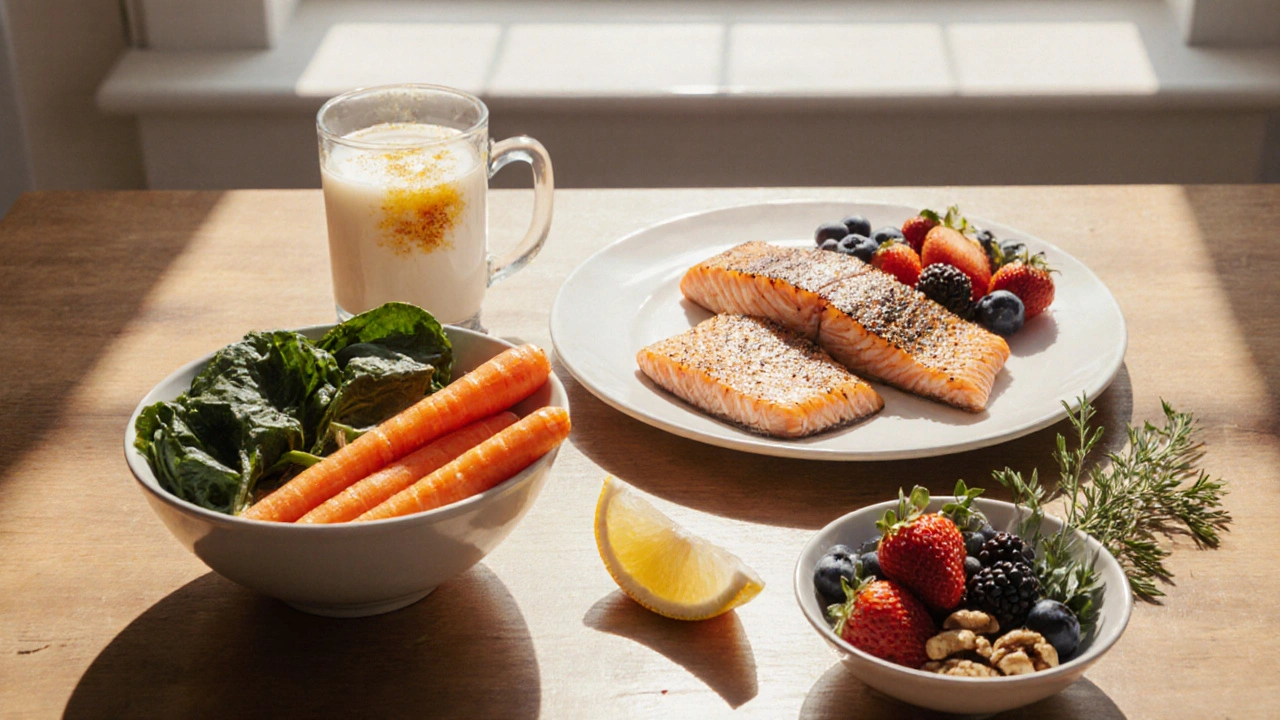Foods for Sickle Cell: What to Eat to Reduce Pain and Improve Energy
When you live with sickle cell anemia, a genetic blood disorder that causes red blood cells to become rigid and block blood flow. Also known as sickle cell disease, it doesn’t just affect your blood—it changes how your body uses food. What you eat isn’t just about feeling full. It’s about keeping your blood flowing, lowering the chance of painful crises, and giving your body the energy it needs to fight off infections.
Hydration is the first rule. Water isn’t just a suggestion—it’s a necessity. Dehydration makes sickle cells more likely to clump up and block vessels. Drink water all day, not just when you’re thirsty. Add electrolytes if you’re sweating a lot or in hot weather. Foods with high water content, like watermelon, cucumbers, and oranges, help too. Then there’s folic acid, a B vitamin your body needs to make new red blood cells. You can’t make enough of it on your own, so you need it from food: leafy greens like spinach and kale, beans, lentils, and fortified cereals. Without enough folic acid, your body struggles to replace damaged red cells, which makes fatigue and anemia worse.
Iron, a mineral that carries oxygen in blood, sounds like it should be a hero for sickle cell—but it’s tricky. Many people with sickle cell get too much iron from repeated blood transfusions, so extra iron supplements can be dangerous. Get your iron from food only if your doctor says it’s safe. Good sources include lean meats, poultry, and fish. Pair them with vitamin C-rich foods like bell peppers or strawberries to help your body absorb it better. Avoid iron-fortified cereals unless prescribed. Zinc and antioxidants matter too. Nuts, seeds, whole grains, and berries help reduce inflammation and support your immune system. People with sickle cell get sick more often, so keeping your defenses strong is part of daily care.
Some foods can actually make things worse. Avoid alcohol—it dehydrates you fast. Cut back on processed sugars and fried foods. They spike inflammation, which can trigger pain episodes. High-fat meals slow digestion and make you feel sluggish. And never skip meals. Going too long without eating can drop your blood sugar and stress your body, increasing crisis risk. Eat small, balanced meals every 3–4 hours. Protein helps repair tissue, complex carbs give steady energy, and healthy fats from avocado or olive oil support cell membranes.
There’s no magic diet that cures sickle cell. But eating right gives you control. It helps you feel stronger, recover faster after pain episodes, and reduces how often you end up in the hospital. The posts below give you real, tested advice from people who’ve lived with this condition. You’ll find meal plans that work, grocery lists that save time, and simple swaps that make a difference. No fluff. Just what actually helps.
How Diet and Nutrition Can Help Manage Sickle Cell Anemia
Learn how specific foods, nutrients, and hydration strategies can help manage sickle cell anemia, reduce crises, and boost overall health.
More
